Liveblog: salmon-orca workshop III
Live blog from the third and final workshop on “Evaluating the Effects of Salmon Fisheries on Southern Resident Killer Whales” that begins today (9/18/2012) in Seattle, WA.  The workshop runs Tuesday-Thursday (9/18-9/20). During this third step in the process NOAA initiated to manage chinook salmon with attention to southern resident recovery, a U.S.-Canada science panel will hear comments on their draft science plan along with new presentations of data and analysis that may improve the plan.
Exciting aspects of the workshop III agenda are presentations by Mike Ford on diet and distribution of SRKWs, Sandie O’Neill on contaminant and stable isotope insights, Sam Wasser on hormone analyses, John Durban on growth and body condition, and Dawn Noren about energy requirements.
Most presentations (will) include links to the slides (PDF or PPT) archived on the workshop web site. Select presentations also include a link to the audio recording of the presentation.
Day 1 (Tuesday, 9/18/2012, 8am-5pm)
8:16 Pat of WA Dept of Fish and Wildlife comments (mp3)
- Generally agree with draft report regarding the low impact of extant fisheries on killer whale recovery.
- But, in sections 5.2 and 5.3 the report mentions the distribution of “far north-migrating” Chinook stocks. Coded wire tag and genetic data from off WA coast show that many stocks are present, including: Sacramento and Northern Oregon coast. Columbia river summer chinook do sometimes wander into the Strait of Juan de Fuca or the San Juans.
- Need more data on winter distribution of SRKWs.
- There maybe thresholds effects, but they may be hard to detect.
- Eric Eisenhardt comments:
- SRKWs did go north of Vancouver island twice this summer, so that confirms they are foraging outside of Puget Sound and the Northwest Straits
- L-112 Victoria/Sooke had both Chinook salmon and halibut in her stomach.
8:36 John Carlisle of Alaska Department of Fish and Game comments (mp3)
- Growth rate criteria may not be the best metric for recovery. The growth rate will ultimately decrease as the population reaches carrying capacity. If you go to an abundance-based criterion, you’d conclude that the population is going to recover. Since the aquaria removals this population has been recovering.
- Comment from Ken Balcomb (cutting through the smoke and mirrors): if you choose any decade other than the mid-70s when the population was at its lowest, the SRKW population is in decline, not growing. There were 100-120 before the captures; there are 84 now. That’s a decline in my book.
- Comment: we ought to look at where these animals in every month of the year.
- Mamorek and Ford: we are not being consistent yet about defining each season.
9:01 John Ford of Northwest Fisheries Science Center comments (mp3)
- Reminded audience of workshop I and II data showing movements along outer coast at least from January through July.
- Diet information was under-emphasized. We had more than two samples and we have new data.
- Report makes overly simple assumptions about seasonal distribution
- There is seasonal overlap of whales and Chinook stocks (they don’t feed only in the Salish Sea during the summer).
- We need to be very clear about seasons and could look at shorter-time-scale overlap.
- Not all versions of Ward’s lambda are comparable with the recovery growth rate criterion.
- Comment discussion (Bain, Durban, Ward) of whether the SRKW abundance time series shows density dependence or not.
9:22 Department of Fisheries and Oceans comments (mp3)
- Status of SRKW
- the panel inference of increase (rather than decline) is stronger than warranted given inherent uncertainties (ref Velez talk later this morning)
- causation is evidenced by multiple lines, including CPUE declining with decreased Chinook abundance
- Feeding habits
- Winter ecology could benefit from synthesizing information from w0rkshops 1 & 2, including all new acoustic and visual observations.
- Diet data for Dec-Apr are scarce, but Chinook still appear to be primary prey.
- Statistical design of diet studies should be undertaken
- Fisheries and prey availability
- Vast majority of Chinook eaten May-September are Fraser Stocks, but only weak association between terminal run of Fraser Chinook and SRKW vital rates. Why? Low quality data on Fraser Chinook? Abundance of Fraser Chinook may be sufficient for current SRKW population size.
- Scordino question: why isn’t satellite tagging being done in Canada? John Ford: we’re focusing on acoustic detections along outer coast to get better sense of timing during off-season periods.
- Balcomb question: wrt statistical sampling — our scale and fecal samples are really only collectible during low sea states; those samples are/will-be difficult to obtain during the winter months offshore.
- Marmorek question: Why isn’t there a stronger association between Fraser Chinook time series and vital rates? We’re not sure, but there is a strong correlation between coast-wide Chinook abundance and vital rates… Led to discussion of correlations… Mike Ford summarized by saying there’s no single stock that’s better than the coast-wide abundance index.
10:20 Antonio Velez-Espino — Killer Whale Demography (mp3)
- Selected 1987-2011 demographic data [10 years less than Ward!], used 7 age/sex categories [different than Ward’s!), and defined lambda as the asymptotic population growth rate
- SRKWs have greater vital rate variability, lower fecundity, and higher mortality, and higher proportion of post-reproductive females — compared with NRKWs.
- SRKW are in mild decline of -0.91%, while NRKWs are in annual increase of 1.65% (which is below the current SRKW recovery criterion!)
- 48 individuals were captured or killed according to Olesiuk
- Greatest effect on vital rates is due to young female survival
- Maximum increase in pop growth is produced most by young and reproductive female fecundity.
- Greatest increase to lambda (pop growth rate) comes from avoiding reductions to survival of young reproductive females and increasing their fecundity.
- Comment: why did you start with 1987? Answer: this was a compromise between extent and highest quality data that is most representative of the current population ~25 years or one generation back.
11:00 Mike Ford Review of southern resident diet information by season (mp3)
- Cloning and high-throughput sequencing (extract DNA from homogenized and pooled from about 1000 prey samples and 300 fecal samples from a period of years (Jan-Apr not well represented); use primers for potential prey, not SRKWs; use reference and custom data bases of 40,000 DNA sequences; post-processing to remove chimeras) which has potential sources of bias (from collecting to relative tissue density of mitochondria, digestion factors, PCR amplification differences)
- Results: May-July dominated by chinook; Aug-Sept include some sockeye and coho; Oct-Dec mostly chum (~3x more chinook than chum in Oct and Dec, but ~2x chinook more than chum in November); 2005-2008 August was highest proportion (~15%) of sockeye (Chinook made up the rest); Most fish were year 2-4, but some younger during winter in Puget Sound.
- Jan-Mar only a handful of samples, but almost entirely Chinook.
- Is this a summary of Salish Sea only? Yes, all fecal samples for summer months are from inland waters, though there are some samples (from John) from the outer coast…
- Q: John Ford — Have you looked at samples that may contain prey transported by SRKWs as they return from an excursion to the outer coast. A: no due to budget constraints we have combined samples to look at average patterns.
- Mike Ford: We haven’t tried to quantify the levels of DNA in the fecal samples from L-112, but we have detected Chinook and halibut.
- Ken: wrt oct-dec sampling, all three pods were in the area during that point
- Tim from NOAA fisheries: 2010 was our world record sockeye year. Mike: we sadly have no samples from those months in that year. Tim: there are blackmouth present during chum runs.
11:21 Sandie O’Neill Integrating stable isotope, genetic, and scale samples… (mp3)
- These methods differ, but are complimentary (stable isotopes average longer spatial and temporal scales)
- D. Herman studied stable isotopes of KWs and prey that provide TEFs that help interpret our mixing model which shows SRKW stable isotope signatures along the “salmon line” in a location that our “classic” model says is associated with a diet in late summer of 43% Chinook (scales suggest 70%; fecal suggest range…)
- An “alternative” model gives more weight to known prey choices and lets us ask what would TEFs need to be for results to be consistent with scale and genetic data?
- 52 scales samples (NWFSC only) (2004-2008?)
- Estimated diet with scales (no genetic prior) = 72% median Chinook proportion
- Median nitrogen TEF 1.65; carbon 1.18 (lower than reported)
- Main result from all models: Chinook is dominant in September, but proportion is a little lower than expected.
- Time-frame represented by biopsy samples (from about 12 of about 30 available SRKW samples) were selected to be from period of Aug-Sep, but we don’t know over what time scale the sampled isotopes are influenced…
- Hypotheses:
- SRKW eat more juvenile Chinook than we think
- SRKW eat some other lower trophic species that’s not detected well in prey and scale samples (possibilities: BC halibut is left of salmon line; lingcod, rockfish, herring, and English sole are all to right [higher deltaC%])
- SRKW eating more chum, sockeye, or steelhead than are apparent in the scale samples
- Isotope turnover rate is based on bottlenose dolphin skin growth rate of 72 days.
- John Ford: 2 stranded SRKWs on outer coast showed stomach contents consistent with Chinook and squid. Have you looked at their stable isotope signature?
- John Durban: might fasting affect isotope ratios in the skin biopsies? Dawn: mammals usually metabolize all fats before affecting proteins.
- Daniel: trophic fractionation data may help with your mixing model (KWs are like most terrestrial predators ~3-5 for nitrogen)
- Scordino question…
12:00 lunch break
13:21 Sandie O’Neill — Using chemical fingerprints in salmon and whales to infer prey (mp3)
- Contaminants in fish (POPs = PCBs, PBDEs, hexachlorobenzenes (HCB), etc.)
- How do west coast Chinook salmon populations differ in POP concentration (about 30 fish from each of Skeena, Fraser (S. Thompson, upper/middle Fraser; no Harrison yet), Columbia River, Sacramento/San-Juaquin; about 80 from Puget Sound)
- Puget Sound PCB levels about 4x higher than other sites (~60 ppb and highly variable — 10-210 ppb, migratory-resident); sub-adult residents ~140 ppb mean…
- Multi-dimensional scaling plot (4 POPs) show similarity of samples: groups show Skeena is more distinct from CA, than Fraser is distinct from Columbia, with distinct and bimodal Puget Sound Chinook. Herring show similar geographic grouping of this pelagic signal, but benthic species show more local non/urban-patterns.
- K/L pod fingerprints overlap with CA/Columbia fish; J pod overlaps most with Puget Sound non-resident Chinook.
13:50 Michael Ford — Overlap of southern resident killer whales and Chinook salmon (mp3)
- What we really want is overlap of SRKW and Chinook along west coast over time.
- Figure from first workshop: Daily SRKW (all pods, and J pod alone) sightings 2003-9 is above 75% for May-July, above 40 in Aug-Oct.
- K/L pods not showing up more than 50% of the time until June
- Slide with inference of time spent in regions offshore of CA, OR, WA, BC by Ken B (too small to see values)
- Acoustic recorders of Brad and John show SRKW (mostly K/L) detections per unit effort peaking at 10% during Jan-Mar at Columbia, but also significant during winter as far south as Point Reyes. Riera plot shows seasonal pattern of NRKW and SRKW at mouth of Strait of Juan de Fuca.
- Summarizing whale distribution
- July-Sept 56% of time inland; 44% in western straits and Vancouver Island
- April-June — 70% outer coast (~19% of days accounted for with PAM/NOAA — 65% centered on Columbia, 30% near Tatoosh, 5% south of Columbia.
- Oct-Dec 81% outer coast, 19
- Jan-Mar 96% (missed north-south breakdown), 4%
- Chinook distributions (Weitkamp, 2010, coded wire tag data; May 2010 genetic data from WDFW, NMFS, DFO not covered here much but consistent with CWT results)
- Summer — 56% inland; 44% western straits (more than 100 tags annually from lots of stocks — central BC to CA, including Columbia)
- Spring — 68% of time outer coast (65% off Columbia to Olympic coast; 30% western straits; one more…)
- Winter — 75% outer coast (75% Columbia/WA) 4% puget sound [Only about 6000 tags over 40 years of CWT effort; compare with summer total of ~110,000]
- Fall — 81% outer coast
- Whales spend ~40% of time west of Strait of Juan de Fuca
- April-Dec SRKWs overlap with all major stocks south of central BC
- Jan-Mar very limited salmon data
- Ken Warheight WDFW samples from Chinook ocean troll fisheries off WA coast show 2011 May-Aug show lots of Columbia stocks, and other (mostly Oregon)
- WCSGSI Collaboration by Pete Lawson and Renee Bellinger show genetic data: similar stocks present off OR coast.
- Furthest south J pod has been detected on acoustic recorders is Westport.
- Comment from Dave _____: CWT data show salmon distribution where fishing occurs, not necessarily their natural distributions; same commenter said “Columbia stocks spend their entire life history in the range of the SRKW” (!). The north OR coastals come in June when SRKWs are mostly in inland waters. M.F.: One of my main points is that in June, and especially May, K/L pods are spending at least half their time on the outer coast.
14:22 Antonio Velez-Espino, DFO — Role of ocean and terminal run abundance of Chinook salmon on Resident Killer Whale population viability (mp3)
- 1: Main hypotheses (based on diet evidence)
- 1a. SRKW growth influenced mainly by terminal run size of Fraser Early, Fraser Late, and PS Chinook
- 1.b NRKW Northern BC, Central BC, WCVI…
- 2: Additional hypotheses (assuming Chinook remains important diet component year-round) relate to stock size, spatial overlap, and temporal overlap
- 2a. SRKW growth influenced mainly by terminal run size of abundant stocks
- 2a. SRKW growth influenced mainly by ocean (pre-terminal) abundance of ocean-type stocks with large contributions to ocean fisheries
- …
- Again using 1987-2011 RKW abundance and vital rates, Kope-Parken terminal run size, CTC Cohort ocean abundance, simple * mulitple linear regression models
- Results:
- Some support for 1a and 2a; interestingly, most interactions occur with female 2 fecundity (old reproductive females)
- Interactions with Puget Sound ocean abundance and young & old reproductive females; and WCVI are most important. (Both are selected for fisheries scenarios)
- We, too, were surprised that the Puget Sound ocean abundance seems to be more important to SRKW population growth than the Fraser river stocks. It may be that there are confounding factors (e.g. toxins) or it may be we don’t have enough data to resolve what may be weak signals.
14:52 Sam Wasser — Why physiology matters (mp3)
- Challenges to assessing recovery (3)
- Physiology is a bridge — dynamic changes can be captured by allostatic load; reproduction can be suppressed by physiology.
- Having many factors influence a given hormone is a strength!
- Endangered caribou example
- SRKW results (4 years)
- GCs increases with psychologial and nutritional stress
- Thyroid T3 decreases with nutritional stress, but changes more slowly than GC
- Hi Thyroid corellates with high birth rates and low death rates
- The more Chinook at the Columbia (or Fraser) river, the higher the mean T3 level
- We get 150 POP samples/year (compare with O’Neill’s 30 biopsy samples) showing, e.g. PCB/DDT ratio for K/L pods is always much lower than for J pod
- Guide mitigation
- If fish matters most, recovering fish should be top priority (maybe not fisheries, but Habitat!)
- Timing of run may be key (delaying fishery may help)
- Measuring physiological response over time could also indicate how things improve in response to mitigation
- Few tools can offer that
- During last workshop, L10 (L90?) was thought to be injured. We’ve already resolved that she was pregnant and aborted!
- There is tremendous variability from year-to-year in Fraser (Albion, 2007-2011; 66k-242k). In a year when there are long delays in the Fraser peak (near Julian day 240), it may be devastating if
- Andrew Trites comment regarding possibility that thyroid data could be interpreted differently (referenced their captive starvation experiments and some studies in wild).
- Lance Barrett-Leonard comment: we historically have observed that RKWs arrive in a condition of relative nutritional stress — e.g. ketosis, more foraging earlier/ more social later.
- Comment: upper Columbia river stocks (Bonneville) aren’t caught in any ocean fisheries; lower Columbia and Willamette stocks are more impacted by ocean fisheries.
15:24 Break
15:53 John Durban — Size and body condition of southern residents (mp3)
- Review of last fall’s results along with new analysis
- New analysis regarding two comments made by NWFSC that suggest there has been a misunderstanding:
- photogrammetry of Durban et al 2009 has high error rates.
- photogrammetry did not detect that L67 was near death.
- We used boats of known length to quantify bias of ~7cm at altitude of 1000′
- But when we’re measuring distance ratios (relative shape), e.g. length/width, within the same photograph, altitude does not matter. Width is harder to measure than body width due to waves at edges of body, so we used head width/length to gauge error rates; average coefficient of variance only 0.03. L67 was only 0.12 when average female was ~0.135.
- Latest efforts are looking at whole body shape differences between whales
- L67 jumps out as having “peanut head” and anomalously thin peduncle
- J14 and J17 were measured when around 12 months pregnant and found the peak of their width came aft of their dorsal fins.
- Pitman et al, Journal of Mammalogy 88 demonstrates with Antarctic KWs where we hope to go with SRKWs.
16:16 Dawn Noren — Energy Requirements and Salmon Consumption by Southern Resident Killer Whales in their Summer Range (mp3)
- RKWs (both N and S) are larger than Icelandic KWs (from which captive KWs have been used to get estimated length at age from time series data)
- Best estimates of asymptotic body length of SRKWs come from captive Islandic whales — Females 630 cm; males 700 cm — and are also consistent with the initial photogrammetry results of Durban (when corrected by 80% factor?)
- There are some times when SRKWs are estimated to consume upwards of 50-60% of some runs
- Conclusions:
- Two approaches to determine SRKW DPERs yield similar results.
- Two approaches (Williams vs Hanson) do differ slightly…
- …
 16:40 General discussion (mp3)
- Ray Hilborn question: is there scientific consensus about an annual cycle in killer whale condition?
- Durban confirms that later in the summer social behaviors that create better grouping for photogrammetry
- Barrett-Leonard makes another supporting point…
- Bain mentions that other patterns suggest early stress (travel speeds get higher, echolocation rates higher)
- Wasser suggests that they seem to have had their most energetic feeding of the year in the early spring; he may have said “best body condition,” but meant most energetic feeding.
- How do we make population inferences from studies of individual whales.
- Sam: it depends on number of samples you’re getting.
- Longer discussion with comments from Ken B., Fred F., Dawn N., Lance B-L. (behaviors like prey preference and inertia are important), John D. (we should indeed reflect more than we have on our inferential framework).
- Another panel member suggests it may be fruitful to conduct a meta-analysis of other populations (e.g. for population significance of a female that has a 100% offspring mortality).
- John Ford suggests comparisons with transients would be useful, but we lack the detailed census information and behavioral observations we have for residents.
- John Durban mentions recent completion of study of a few *thousand* resident KWs from northern climes (often feeding on acker-mackerel(?)) leads him to think that SRKWs are indeed unusual residents.
 Day 2 (Wednesday, 9/19/2012, 8am-5pm)
8:00 Intro (mp3, latter portion only)
8:17 Ken Warheit, WDFW — Genetic composition of recreational catch from the San Juan Islands (mp3)
- Genetic Stock Id (GSI/PSC-CTC GAPS baseline) analysis, age, fork length from 450 Chinook taken from 2009 San Juan Islands recreational fishery
- Stock composition is different from SRKW diet (sampling in different years, though)
- No diff in size and age distribution between Fraser and PS stocks (including hatchery)
- SRKWs not using some areas where humans catch large Chinook (from Puget Sound)
- 3 basic stocks: Fraser (101, 96 wild), Puget Sound (297, 51 wild), Other (47, 31 wild).
- Most overlap in human and orca (Hanson samples) are Hein Bank to Henry Island; orcas not catching (or Brad not sampling) as much as recreational fishers inside east San Juans or Rosario; no fishers reporting from Pt Roberts area where orca prey samples were obtained.
- Lummi Chinook bycatch in their sockeye fishery report mostly Fraser Chinook in Pt. Roberts/Alden Bank area.
- Chinook proportions are much lower in recreational catch than in orca samples, with greatest difference in July (all areas of San Juans ~10% Chinook)
- Fork length vs age: mean length ~55 cm in age 2, 70 age 3, 80 age 4, 90 age 5 (legal limit ~52)
- In each area the same age class are about the same across 3 main stock groups.
- There appears to be a difference in
- Comment Tim of NOAA: sockeye migratory corridor changes from Rosario to Haro from year to year. Do Fraser Chinook do the same? A: The main reason there are proportionally more PS fish caught in Rosario area is that there are many more PS fish there; there are, though, some Fraser fish are present there. Tim: Skagit fish mill in the Anacortes area.
8:47 Robert Kope, NOAA — Effects of fishing on availability of Chinook salmon to resident killer whales (mp3)
- Harvest impacts make up more than 20% of the “Parken-Kope” indices
- The indices don’t account for immature (age 3-4) fish not killed by fisheries.
- On average, these immature fish account for more than half the total abundance in the ocean.
- How appropriate is the 20%? Harvest impacts account for 33% of the aggregate PK index.
- What matters to the killer whales is the local density where they’re foraging. Abundance may be sort of irrelevant to RKWs. Overall, 20% seems like “a reasonable ball-park number.”
- Bain question re whether immature fish are important to SRKWs that seem to prefer largest fish?
- Alison question: Should we be considering outside stocks more? A: The fall aggregate mostly consists of outside stocks.
- Panel question: Can we clarify salt-water age versus fresh-water age 2-5 terminology? A: Most stocks except Fraser spring Chinook have ocean-type (vs stream-type) life history.
- Another public comment re Upper Columbia River Chinook not being available in the ocean fishery.
- Larry Rutter comment: we should be very disciplined about the nuance between harvest rate and exploitation rate. A: Within a small group of the Pacific Salmon Treaty, there is a distinction harvest rate is “a reduction in the number of fish that are available.”
9:14 Robert Kope, NOAA (again) — Assessment tools for evaluating effects of salmon fishery management on resident killer whales (mp3)
- Fishery assessment tools — FRAM vs CTC — use similar algorithms and ~95% same data.
- Exploitation Rate Analysis (ERA) uses coded wire tag recoveries by brood year, typically available a year out (e.g. 2012 ERA used CWT data through 2010)
- ERA, GSI, and Parken-Kope are retrospective
- CTC, FRAM are both retrospective and prospective
- Mark-recapture is the “gold standard” for estimates of escapement numbers which are used as model inputs.
- Panel question: I’m concerned that we have model predictions with CVs of 50%. Ward A: forecasting beyond ~5 years is difficult.
- Panel question: Is KW predation changing the natural mortality rate in a way that the FRAM model doesn’t capture because it uses a fixed natural mortality rate?
9:42 Antonio Velez-Espino — Chum salmon as a covariate of Resident Killer Whale population viability (mp3 | video)
- Using BC and WA terminal runs of chum
- Highest elasticity was for interaction between Puget Sound salmon stock aggregate and fecundity of young and mature reproductive females
10:40 Eric Ward — Estimating “other†marine mammal effects on salmon with limited data (mp3 | video)
- How much to seals and sea lions compete with SRKWs?
- Best U.S. data: harbor seal surveys (Jeffries et al., 2003); Canadian and other data sources have data gaps…
- Panel suggested using Ecopath modeling results, but Eric has no confidence in model outputs.
- Instead cite A. Acevedo-Gutierrez work or citations in his papers.
- Better approach: multivariate state-space modeling using MARRS R package (Holmes+ 2012)
- Essington & Quinn have survey data going back to 1930s/1940s, but data are messy.
- Harbor seals are eating more juvenile Chinook than adults.
10:56 Scott Pearson, WDFW — Competition from Pinnipeds (mp3 | video)
- 3 pinnipeds overlap in range (but not necessarily time and niche)
- Harbor seals: reaching carrying capacity in ~1990s (Jeffries, 2003)
- California sea lions: all males in pulses from southern colonies
- Stellar seal lions: population growing and continuing to grow in SRKW habitat
- It’s complicated!
11:17 Lynne Barre & Eric Ward — Summary of lambda & Killer Whale growth rates (mp3 | video)
- Delisting criteria: mean growth rate of 2.3% per year for 28 years
- Info about population structure and behavior that is consistent with resilient (e.g. shorter inter-birth intervals)
- Data supporting criteria
- 1974-1980 mean 2.6%
- 1984-1996 mean 2.3%
- NRKW 1974-1991 3.4%…
- Some have suggested abundance criteria instead of growth rate…
- If you achieved growth rate of 2.3% from 81 whales in 2001, you’d get to 155 whales in 28 years (in 2029) => delisting
- for 14 years you’d get 113 whales in 2015 => downlisting
11:23 Ward swaps with Barre, summarizes past lambda results, and presents discussion questions (starting ~11:30)
- Mike Ford Q: extinction risk was influenced most by catastrophic events, so maybe an alternative de-listing criterion could be a threat criterion. Lynn A: we have quite a few threat criteria already.
- Panel comment: Given the uncertainty in the historic population size, let’s say you used 1/2 carrying capacity. The estimates I have would put abundance at high 90s or even as high as 300. Ward A: one solution would be to optimize carrying capacity and growth rate. (balance productivity and abundance). In fisheries those are Kobe plots — exploitation rate and abundance are axes…
- Larry comment: Back in Poet’s Cove, we asked “what’s the best think we could do for southern residents.” The answer was take care of Fraser salmon. Now it should be take care of Chinook salmon. Lynne response: one of our three components to the recovery plan is recovery of the prey populations.
- Bain comment: An alternative is a recovery budget that starts with trying to conserve genetic diversity. At 3% growth, you lose 6% genetic diversity per generation. If you stay stable, you lose 25%. If you decline as in 1990s, you lose 50%. I’d like to see actions that try to achieve that 3% growth as soon as possible (WW impact reduction is fast but has short effect; toxin reduction is slow but has long effect; salmon recovery actions have a wide range that could be pieced together to get optimum evolution of population growth). Lynne A: there is a table in the recovery plan that is a basic approach similar to what you’ve mentioned. Dave: Incorporate a time frame into that.
- Scordino Q: if you met your recovery goal and got up to 155 and then did your PVA would you still call it an endangered species? Lynne: I don’t know.
- Scordino Q: if population stabilized and we determined the carrying capacity had been reached, would the SRKWs be delisted? Lynne: I can’t answer that now.
- Mike Ford: We should tie recovery to risk of extinction, not carrying capacity metrics.
12:00 Lunch break
13:15 Questions from panel (mp3)
13:23 Eric Ward — Other approaches to adjusting Chinook abundance (mp3 | video)
- Scenarios involving raising P-K index by 10%…
- Why not other P-K indices? Best predictor is total index (aggregate of all salmon stocks), implies that no one stock is important in all years
13:36 Antonio Velez-Espino, DFO — Resident Killer Whales population viability analysis under selected fishing scenarios (mp3 | video)
- 4 scenarios
- Under status quo, the ime for quasi-extinction of SRKW (population falling below 30) at median probability is ~50 years.
- Under all scenarios, the probability of downlisting is always zero under U.S. criteria.
- Only under most extreme (fishing reduction) scenario does the SRKW growth rate become positive!
- Hypothesis 2a: closing WCVI fishing only increases growth rate by ~0.5%
- 75% reduction in ocean harvest rates of Puget Sound stocks also only results in ~0.5% growth increase
- Is Chinook abundance limiting population growth and viability of RKW?
- We need more research to understand depressed SRKW calf survival (relative to NRKW)…
- First report will be available in February.
- Panel comment: This seems opposite of what Eric Ward found. You’re saying they’re going to go extinct. A: Yes, unless dramatic change is made in fishing impacts, based on this time period we have chosen in which population is in decline.
- Peter Olesiuk’s census data is of high quality for individuals during the period we chose.
- Lots of discussion, primarily around why these results are different from Eric Ward’s.
14:23 Panel presentations about causality vs correlation (mp3 | video)
- Â 5 panel members:
- Jim Irvine
- Dave Bernard, ADFG
- John Ford, DFO
- Scott Pearson, WDFW
- Eric Ward, NOAA
-  Panelist 2: CA fish have been notable in their rarely being mentioned in these workshops. We have a correlation between lower Columbia stocks. I find it ironic that we aren’t looking at the stocks that seem to be important to the SRKWs.
- John Ford: 1990 decline of SRKWs coincident with prolonged decline in coast-wide salmon stocks is revealing. Mortality indices during late 1990s were 3-5 times higher — unprecedented. SRKWs are resilient to 1-2 years of nutritional stress, but not more. 8 of 13 peanut head cases occurred during years of low Chinook abundance.
- Scott Pearson: Chinook are clearly important in both summer inland and winter outer coast habitats. You could look at evidence ratios, but Eric provides reasonable cut-offs that show that Chinook are important. The relationship makes biological sense, but seems to not have a strong effect on SRKW population dynamics. We’re dealing with a species with vital rates that don’t respond quickly. We extremely good data on the killer whales in contrast with fish data that have high coefficients of variation.
- Eric Ward: The N & S RKWs population dynamics are correlated which suggests a bottom-up trophic effect is main control. This is a predator-prey issue in which we know very little about their winter diet, especially historically. So, I’m confident it is a salmon story, but maybe not a 100% Chinook story.
14:52 10-minute coffee break15:10 Panel presentations about effect of fisheries (mp3Â | video)
- Eric Ward: Pinnipeds seem to matter, e.g. SJI harbor seals consuming Chinook
- Scott Pearson: Both Eric and Antonio suggest fisheries can’t influence population very much, but if population is declining a small manipulation could be important. We don’t really understand how SRKWs would utilize an increase in salmon from a fishery reduction, and that puts us in an uncomfortable position. Beyond pinnipeds, there are other species that eat salmon.
- John Ford: In years of low coast-wide salmon abundance, SRKWs showed more intense foraging, were more spread, less social mixing (less superpods/mating). In those cases at specific locations and times, area closures (recreational and commercial) could be meaningful to SRKWs. During prolonged periods of reduced Chinook abundance, it could be effective to manage fisheries more aggressively for SRKWs. During winter when Chinook density may be lower, we should ensure their prey are as abundant as possible, ensuring a year-round supply of food — not just managing the stocks we know they prey upon during the summer.
- David: Just where are fisheries important? Assuming we’ve picked the right fisheries and stocks, then we have simulations that show that if you close fisheries there’s not much impact.
- Jim: I’ve seen little evidence that changes in fisheries impacts on salmon would affect SRKW vital rates, but it does seem entirely likely that there are temporal/spatial bottlenecks that may affect their foraging efficiency and/or behavior. We should have a better understanding of the ecosystem linkages seems to be warranted. It’s entirely likely that the SRKWs are doing so poorly is because they are on the periphery of their natural range. Within Canada we’re moving fisheries — increasingly into terminal (in-river) fisheries. That could increase marine access to fish while still allowing human harvest.
15:20 Last question
What are most critical data needs and analyses to reduce key uncertainties affecting management decisions? What types of evidence to alter/strengthen conclusions?
- Better estimates of Chinook abundance (not just indices), ideally where SRKWs are foraging
- Columbia river springs are not in the indices!
- What is relationship between contaminant loads and vital rates?
- How important is inter-specific competition (to vital rates)?
- How do SRKWs locate and catch salmon and how is their foraging efficiency affected by noise and/or interference?
- We need tools to detect nutritional stress in advance of changes in vital rates.
- Year-round satellite tagging
- Go to empirical data on Chinook (especially Fraser); Parken is pioneering GSI in conjuction with test and high-seas fisheries.
- Chinook density and stock identification at times and places where SRKWs are foraging.
- Better salmon forecasts using marine ecosystem indicators.
- Statistical power analysis, once Eric and Antonio have come to agreement about the base period for assessing growth rate.
15:43 Science panel and panelist discussion (mp3 | video continuous w/previous)
- Schindler: We should be considering alternative hypotheses, e.g. disease
- Trites: Periods of low abundance seem important (not the summertime), so when/where are they occurring?
- Hilborn: In some species, social interactions control growth. Also, the differences between N and S that are more interesting than the apparent correlations
- Science panelist: It appears to me that NRKWs are first in line during the return migration of U.S. Chinook. Ford: Good point. About a 1/3 of prey samples we got from NRKWs near Haida Gwai were Columbia Chinook.
- Jim: Why were Chinook populations low during 1990s? Dave: lowest in my experience was in 1970s prior to the Salmon Treaty. Jim: There was a regime shift in 1970s that led to growth in many marine species and around 1989 another shift caused many declines. The Gulf of AK ecosystem has been doing better recently than the CA current system, so N/SRKW populations are really.
- Eric Ward: habitat and dams are not on the table (for this workshop)!
- Panelist: stochastic events like ship strikes (of calves) may be obscuring correlations, so perhaps hormone and other techniques should be used to detect pregnancies and get at neonate mortality (especially in NRKWs which are rarely observed in winter).
16:10 General discussion (mp3 & video continuous with previous)
- Sam Wasser: overall these analyses have been too coarse and should pay more attention to the annual cycle of interactions between SRKWs and salmon.
- Brendan Cummins, CBD: I don’t understand the general vibe that reducing fisheries won’t make a difference. My reading of Antonio’s model was that reductions could lead to halving of extinction risk.
- Mike Ford: The size of the effect depends on the metric you’re using, so “negligible” on lamba could mean a whale per year for the population. What 3rd factor couldn’t involve the predator-prey interaction? Understanding the differences between NRKW and SRKW are the key to discovering how to help the SRKWs recover.
- Lance Barrett-Leonard: A justifiable management option (without being sued) is actions that reduce fishing pressure during low abundance years. I hope the panel’s final report does not just consider regulation of particular stocks.
Day 3 (Thursday, 9/20/2012, 8am-5pm)
8:30 Larry Rutter final remarks (not recorded)
8:42 Will Stelle final comments (mp3)
- Â The predator-prey interactions of listed Chinook and listed orcas put up a huge red flag for many state, tribal, and Federal co-managers because of the potential management implications.
- I didn’t know what to expect from this high-risk meeting, but I recall how quiet and responsible it was. There were no histrionics. There was no table pounding.
- Thanks to the science panel for credible examination of best available science. Thanks to the sovereign governments that surprisingly stayed focused on this tough subject.
Read More

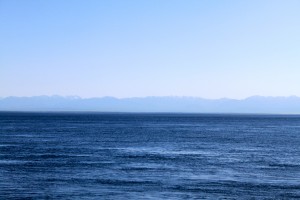
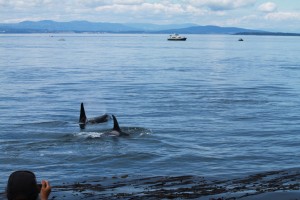
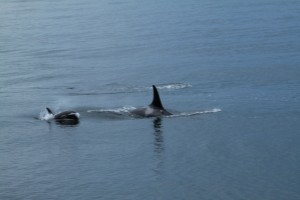
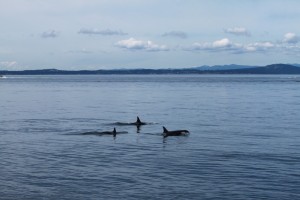
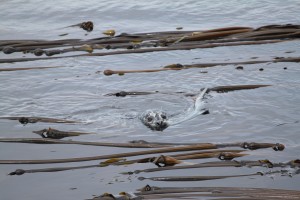
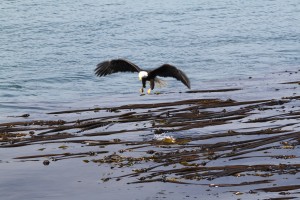
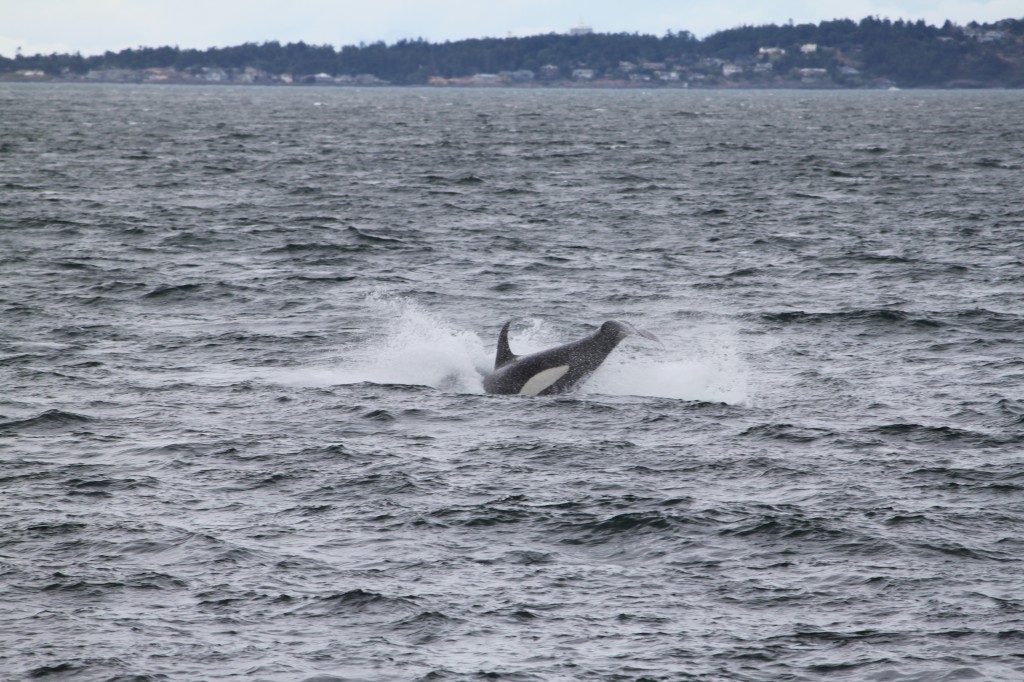

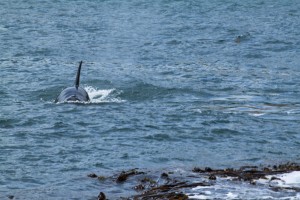
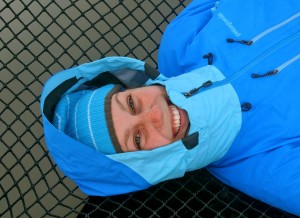
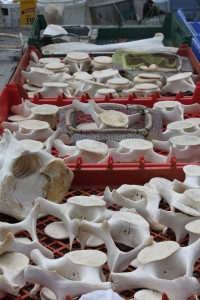
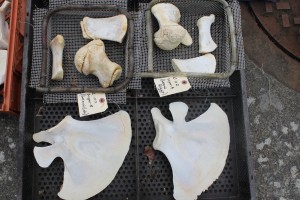
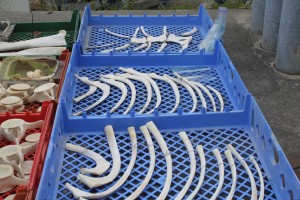
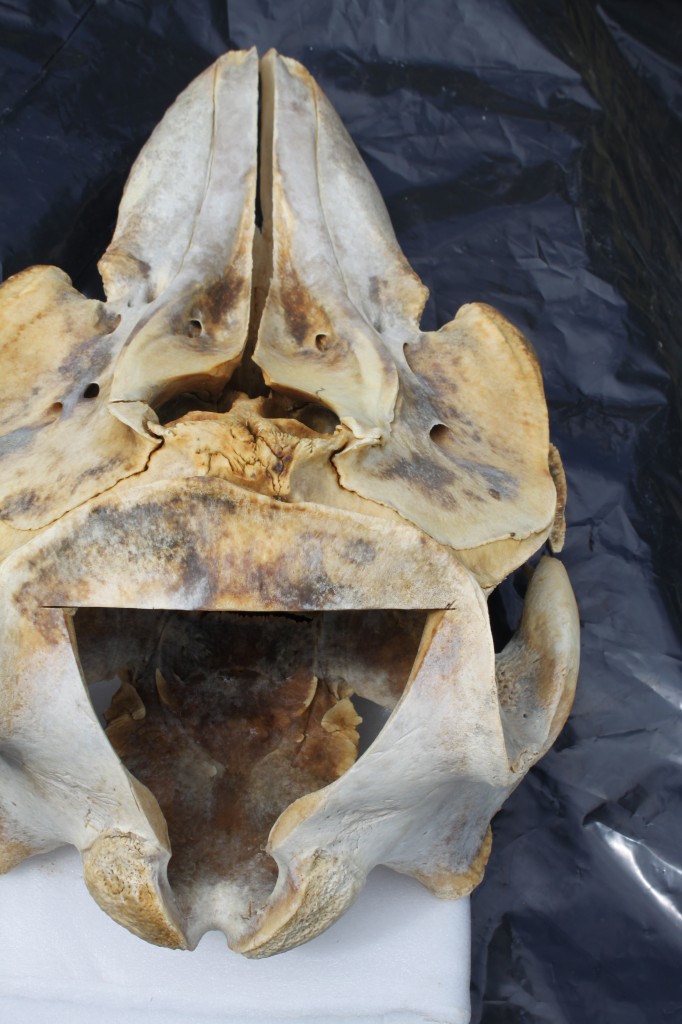
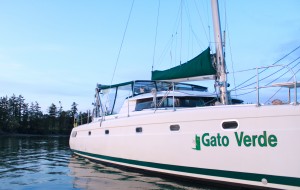
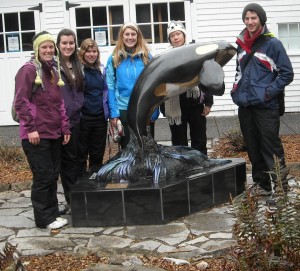
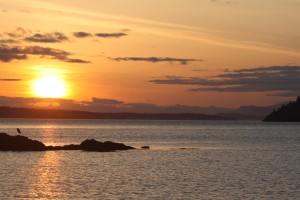
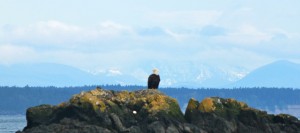


 Twitter
Twitter LinkedIn
LinkedIn Facebook
Facebook